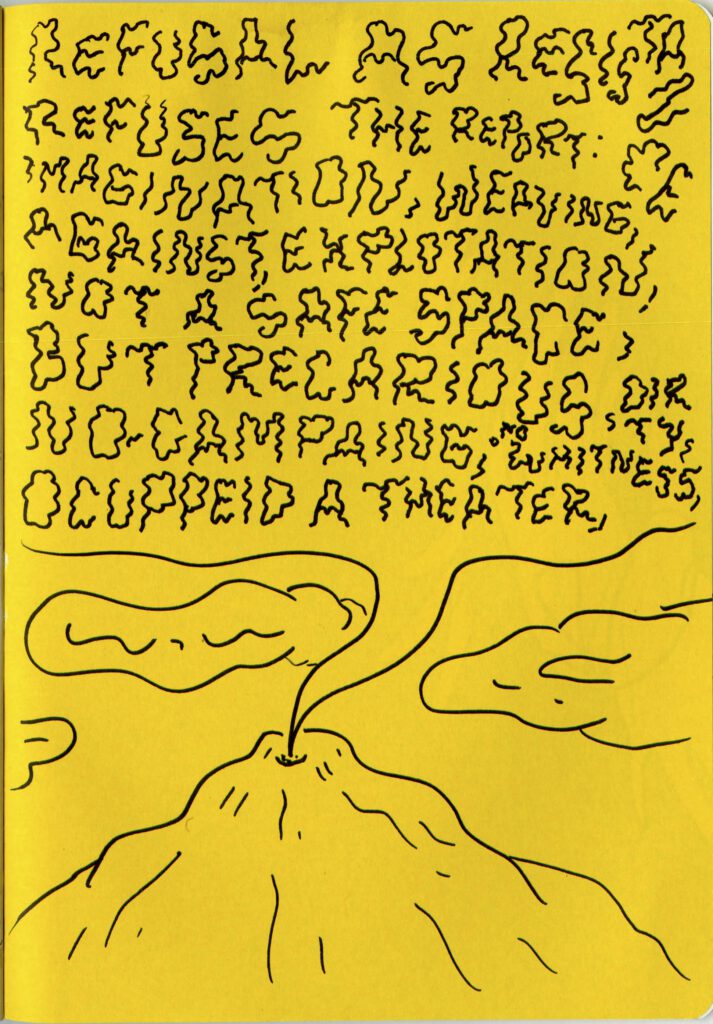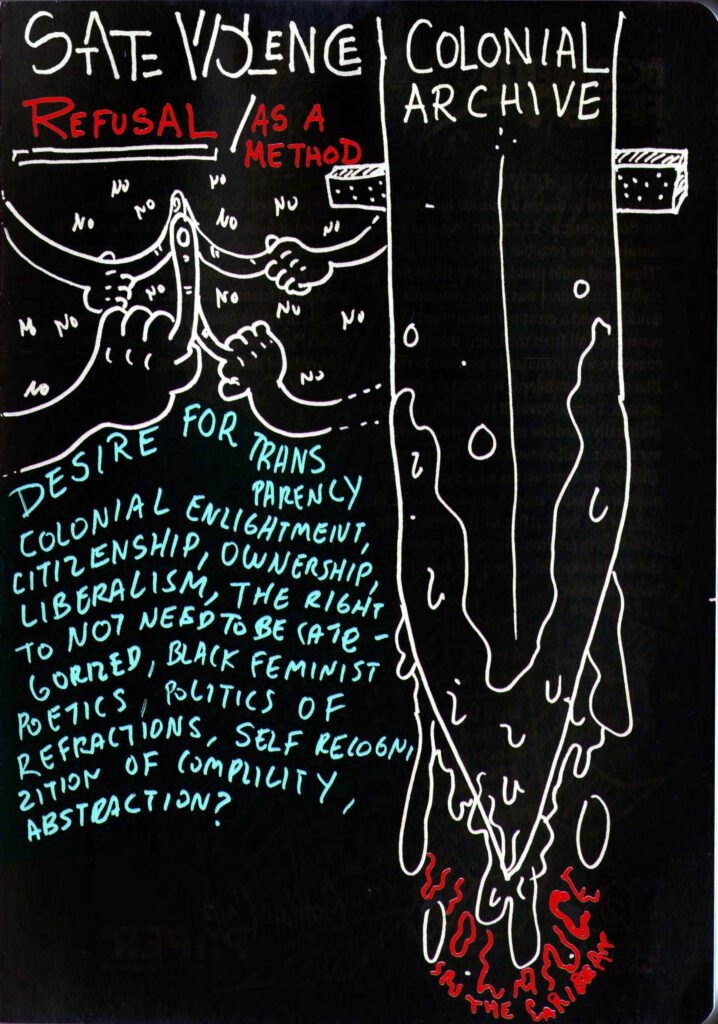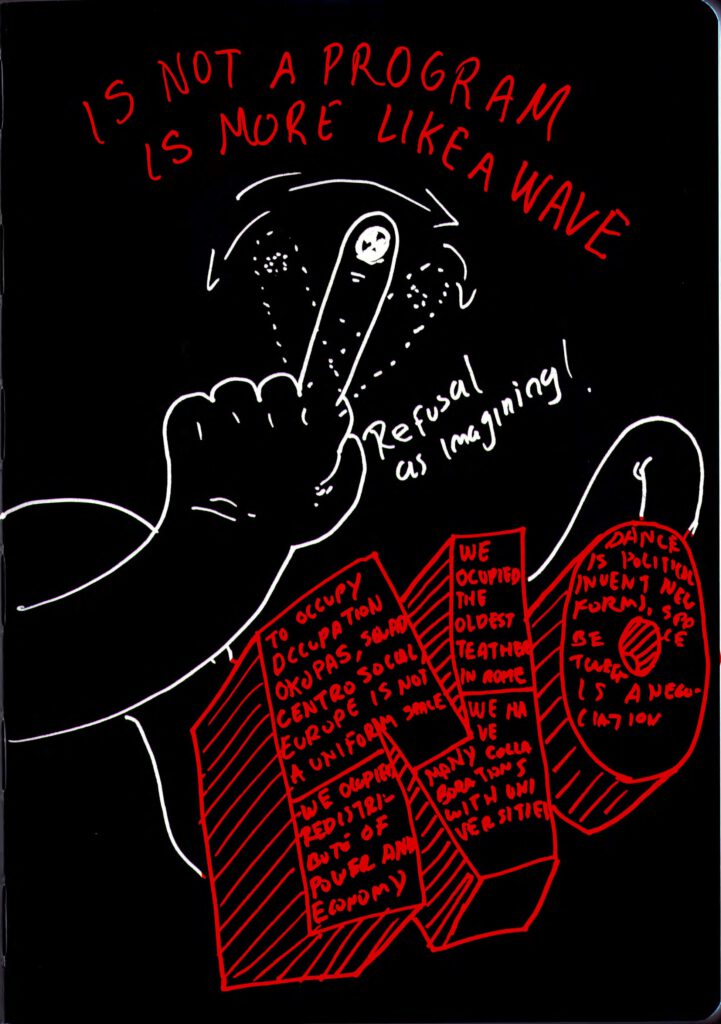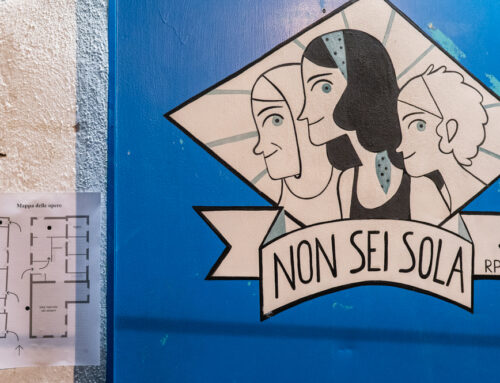Refusal and Imagination
Ilenia Caleo, Paul Goodwin and Deborah Thomas
Harvest by Daniel Aguilar and Diana Cantarey
Hosted by Chiara de Cesari
The final panel explored refusal as pointed intervention punching through the cracks of the present to open it up to a future that was not in sight before –that is, as mode of the radical political imagination. The aim was to bring into the conversation, practices of refusal originating in different political histories—from Black political thought to Italian social movements and autonomy.
Queer performer, researcher and activist Ilenia Caleo kickstarted the panel with a discussion of the refusal of work as generative action in Italy. In the context of Italian social movements and precarious labour, the idea of refusal today is linked to the debate about whether or not to go on strike. For many precarious subjects, indeed, the traditional strike is not an option. This question was much debated within the recent feminist movement Non-Una Di Meno (Not One Less): How can precarious cultural workers strike? What is a queer-feminist strike? Caleo recounted the experience of Il Campo Innocente (The Innocent Field, to say: art is not an innocent field), an informal collective of queer / lesbian / trans / female / non-binary artists practising collective writing and self-inquiry, especially over the question of precarity. She also recounted several occupations—a widespread practice in the history of Italian social movements—that in the midst of the pandemic, helped connect feminist queer and self-organised trade unions in a joint call for unconditional basic income. So over time, protest has generated new tools, and new institutions—imagining other possible worlds.
Anthropologist and dancer Deborah Thomas, a member of the Practicing Refusal Collective, theorised refusal as a rejection of dominant categories (particularly, in Black Studies, that of the human), and as the method of engagement (like Indigenous feminists have developed). She explored both forms of refusal through artistic work she did with the Tivoli community in West Kingston, Jamaica. This area has been hit by state violence, causing the death of 75 people only in 2010. But there has never been broad condemnation of military and police violence there, as the community’s public representation has been that of a violent mafia.
In contexts such as this, Thomas asks: ‘How can we document violence without reinscribing it by way of dominant representations? ‘How can we curate archives that critique the effects of state sovereignty when audiences have been trained to see like a state?’ ‘How do we shape visual practices away from evidence gathering and transparent legible representation?’ ‘How do we move audiences away from indifferent looking, disavowal, or even empathy, to witnessing and repair?’ Thomas offers the power of abstraction as a possible way out that can disrupt dominant regimes of representation. Thomas’’ option is mobilising art and not asking the question of who was it/what happened.
In conclusion, Paul Goodwin illustrated other arts of refusal by showing visual documentation about works by so-called self-taught African–American artists from poor Southern rural communities in the USA. His intervention was based on research and writing he did for the exhibition ‘We Will Walk – Art and Resistance in the American South’ that ran at Turner Contemporary in 2020 and will move to the Royal Academy this year. These exhibitions include sculptural assemblages, paintings and quilts but also music and performances by African American artists who lived through the Civil Rights struggle and its aftermath. These artists reused and reassembled all kinds of materials mixing custom and innovation in artworks that they placed in their backyards. Building on notions of refusal and fugitivity, as defined by theorists like Saydia Hartman, Fred Moten and Tina Campt, Goodwin interprets these works as ‘another genealogy of refusal (…) fugitive and secretive art practices’ hidden in contexts of racial terror and land bondage. In such circumstances, these artists mobilised abstraction and improvisation as transformative, generative actions.
In conclusion, the audience debated how to refuse the language and frames by which the state and mainstream media interpellate alternatives. This refusal could serve as a model or strategy to adopt in response to the attacks against this Documenta in its transformative power.



